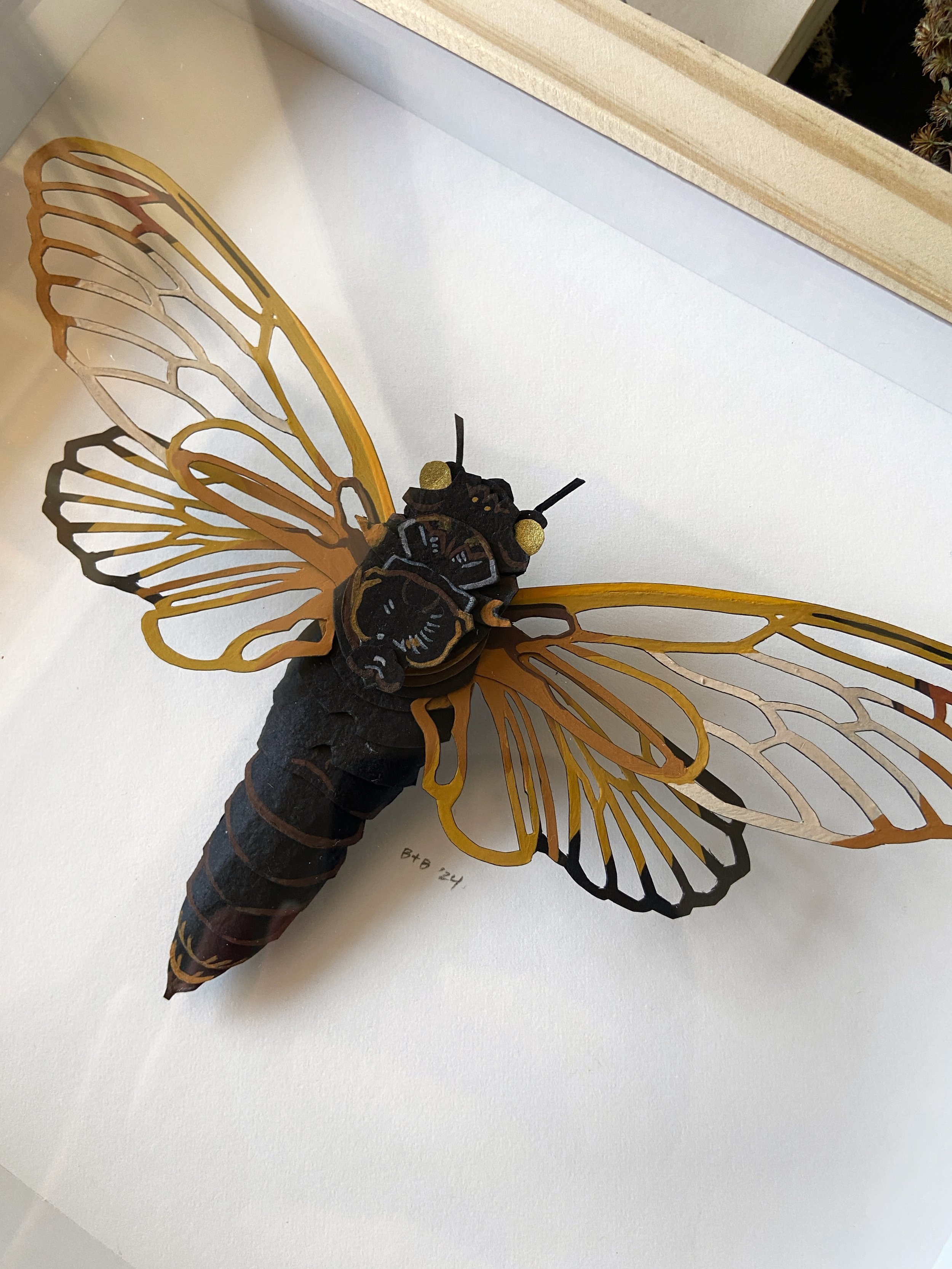 Image 1 of 3
Image 1 of 3

 Image 2 of 3
Image 2 of 3

 Image 3 of 3
Image 3 of 3




A Singular Violence Fine Art Print
A Singular Violence: North American Megafauna Project, #5
Aenocyon dirus and Fire Pink Flowers
17” x 11”
Printed on uncoated acid-free paper with fade-resistant, archival inks.
A Singular Violence pays homage to the formidable jaws and bite strength - the greatest of any known canid-like species - of the unique Aenocyon dirus.
Popularly known as the direwolf, A. dirus was not, in fact, a wolf at all, but an entirely separate species that was so far removed from wolves that it is believed that the migration of grey wolves out of Eurasia and into North America was a trigger for the extinction of A. dirus, as they were not able to interbreed with the incoming species swarming their territory. In their heyday, however, A. dirus ranged widely across the continent, with fossils of this fearsome predator found from coast to coast. A Singular Violence nods to fossils found in the southern states of the US, however, in locations such as the Grey Fossil Site in Tennessee, and the large concentration of direwolf fossils in Florida.
Scattering, blood-like, from the jaws of A. dirus in A Singular Violence, are sprays of the strikingly beautiful Fire Pink flowers, which, though once common throughout the Smoky Mountains and much of the South, are now classified as endangered in multiple states.
Handle gently to avoid damaging the velvety texture of this print, and frame using archival materials for longevity of display.
A Singular Violence: North American Megafauna Project, #5
Aenocyon dirus and Fire Pink Flowers
17” x 11”
Printed on uncoated acid-free paper with fade-resistant, archival inks.
A Singular Violence pays homage to the formidable jaws and bite strength - the greatest of any known canid-like species - of the unique Aenocyon dirus.
Popularly known as the direwolf, A. dirus was not, in fact, a wolf at all, but an entirely separate species that was so far removed from wolves that it is believed that the migration of grey wolves out of Eurasia and into North America was a trigger for the extinction of A. dirus, as they were not able to interbreed with the incoming species swarming their territory. In their heyday, however, A. dirus ranged widely across the continent, with fossils of this fearsome predator found from coast to coast. A Singular Violence nods to fossils found in the southern states of the US, however, in locations such as the Grey Fossil Site in Tennessee, and the large concentration of direwolf fossils in Florida.
Scattering, blood-like, from the jaws of A. dirus in A Singular Violence, are sprays of the strikingly beautiful Fire Pink flowers, which, though once common throughout the Smoky Mountains and much of the South, are now classified as endangered in multiple states.
Handle gently to avoid damaging the velvety texture of this print, and frame using archival materials for longevity of display.
This print is part of Beastie and Bone’s North American Megafauna Project, which is an exploration of ancient extinct species from throughout the North American continent that pairs their remains with common modern day flora of the areas they once lived in. Integrating these past animals back into the landscapes we encounter today in this manner, instead of presenting them as sterile fossil specimens, encourages us to look differently at the shrinking wild spaces around us, and what else may soon no longer be found there unless conservation efforts are supported.



















